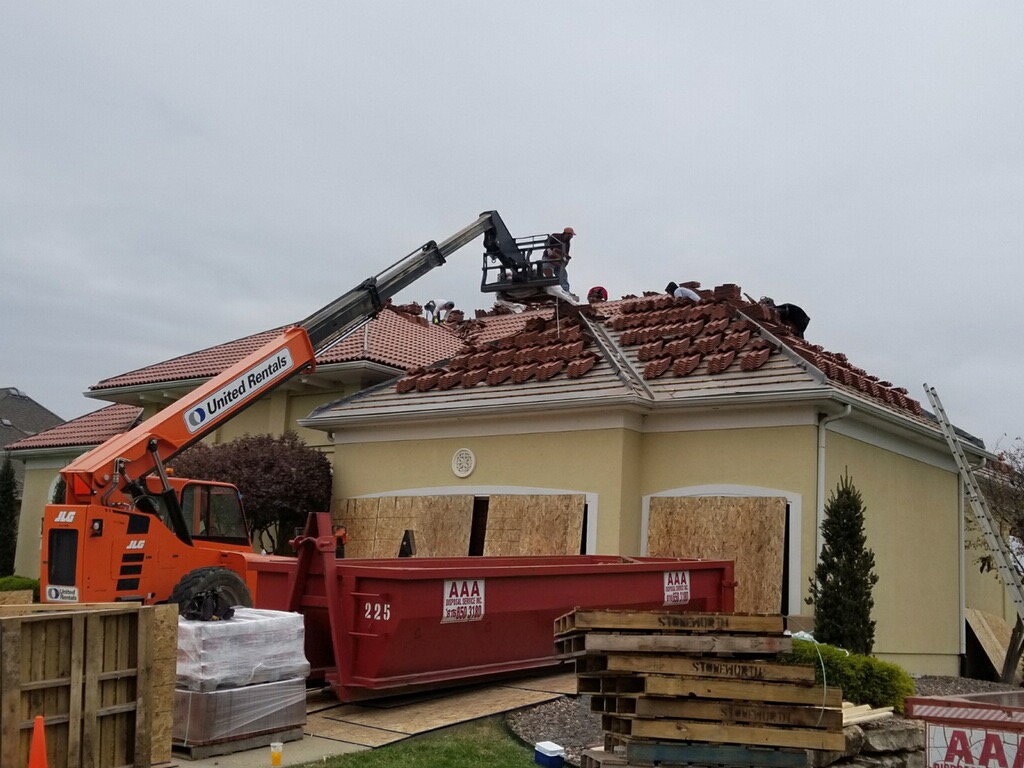Wind Storm Effect on Roofs

Roofs are supposed to protect a building from wind, rain and other potentially damaging weather. Yet, they are not impenetrable structures. In certain circumstances, high winds can severely damage roofs to the point that they no longer serve their purpose. It is also possible for wind to cause minor damage that gets worse if you don’t get it fixed in time. Understanding a wind storm’s effect on roofs gives you a better idea of how and when you need to inspect and repair your roof after a major weather event blows through your area.
Technically, winds are classified as damaging once they hit 50-60 mph, but they can begin to harm your roof far sooner than that. The amount of damage that heavy winds cause depends upon multiple factors. Wind loading is a term that defines how much force the air places on the roof, and you’ll find that it can vary according to the direction that the wind is blowing. The type of roof that you have also impacts the damage that can occur in high winds. For example, hip roofs are more capable of handling higher winds compared to gable roofs since they have four sloping sides that help to soften the force of the wind. You will also find that the damage to a roof tends to be worse on the corners and eaves since these tend to bear the biggest brunt from strong wind forces.
Fix Wind Damage Before the Next Storm
After the danger from a high wind storm has passed, you’ll want to take a good look at the condition of your roof. Severe damage will often be immediately noticeable upon a distant visual inspection. For example, extremely high winds can lift a roof completely off of a building or send large portions of it flying through the air. Other forms of damage might require taking a closer look to see areas that might not be visible from the street. These areas can often start as small problems and escalate to larger ones that you’ll eventually notice once they begin to cause indoor water leaks. Identifying wind storm damage as early as possible should always be your prime goal since this protects you from dealing with more costly restoration projects after future storms.
Wind damage can result in several common roofs problems, and these include the following:
•missing shingles that result in bare patches along your roof
•curling shingles that allow rain to get underneath
•lifting shingles that are more likely to blow off in future storms
•splitting or broken shingles
•missing or loose metal flashing around chimneys and eaves
•failing gutter systems that allow more water to collect on the roof
If the wind damage was severe enough, then you might notice issues inside such as a water leak. If it is the first time that your roof was damaged, then the water might only be noticeable in the attic. You might also be able to feel drafts of air or see sunlight in the attic space if the damage was extremely bad. If you cannot see any damage from the ground, then you still need to have a professional inspection. Roofing contractors know how to identify minor forms of damage, such as curling or lifted shingles, that will cause a problem in the future.
Any major wind event could potentially cause damage to even a newly installed roof, but the risk for problems increases as your roof gets older. The type of roof that you have can also impact the level of damage since asphalt shingle roofs are weaker than other forms of roofing materials. Never leave the quality of your roof in doubt. A simple inspection can give you assurance that your property is protected in future storms.
Are you worried about your roof after heavy winds blew through? We’ve got you covered. Give us a call at 913-850-6556 for an inspection that lets you know the true condition of your roof.